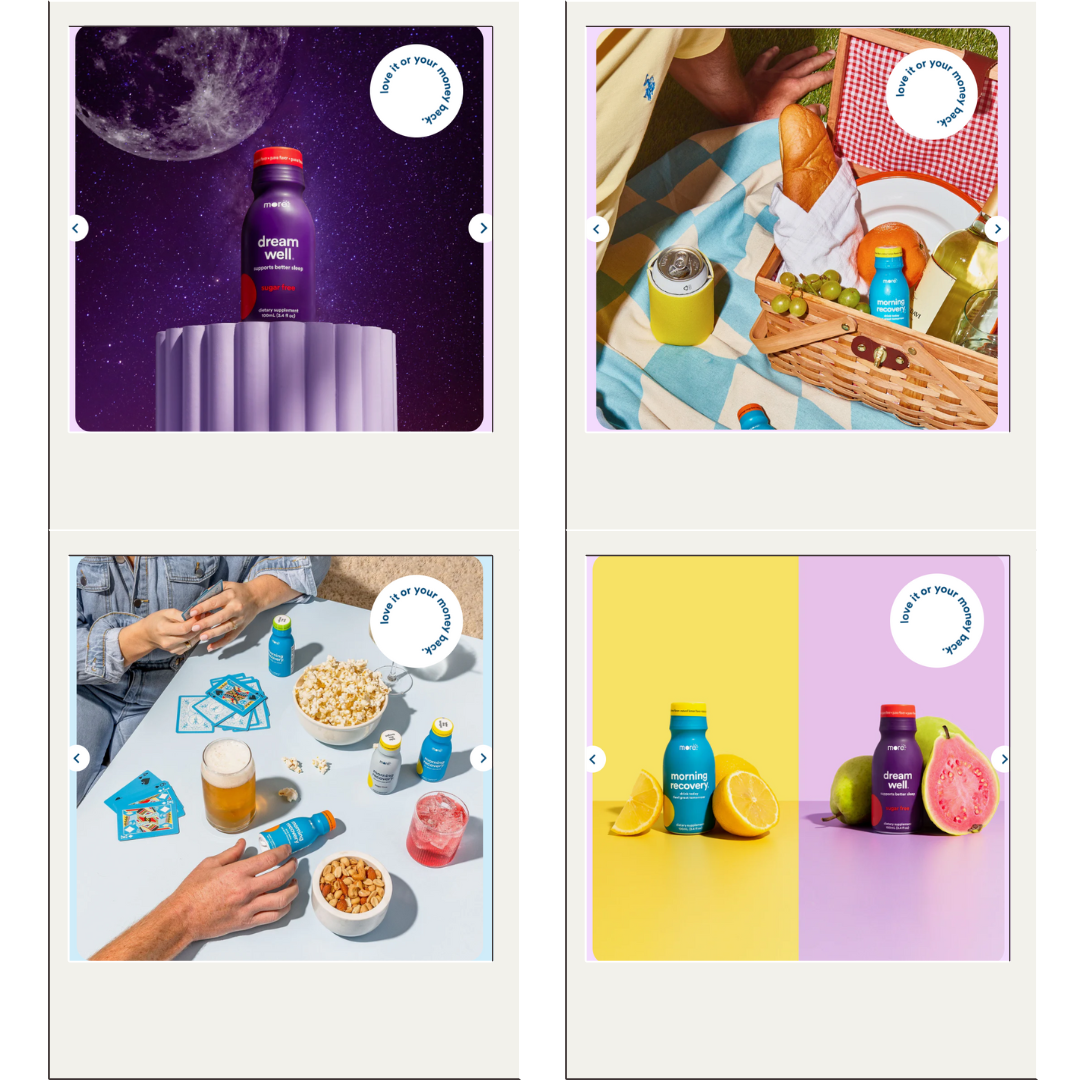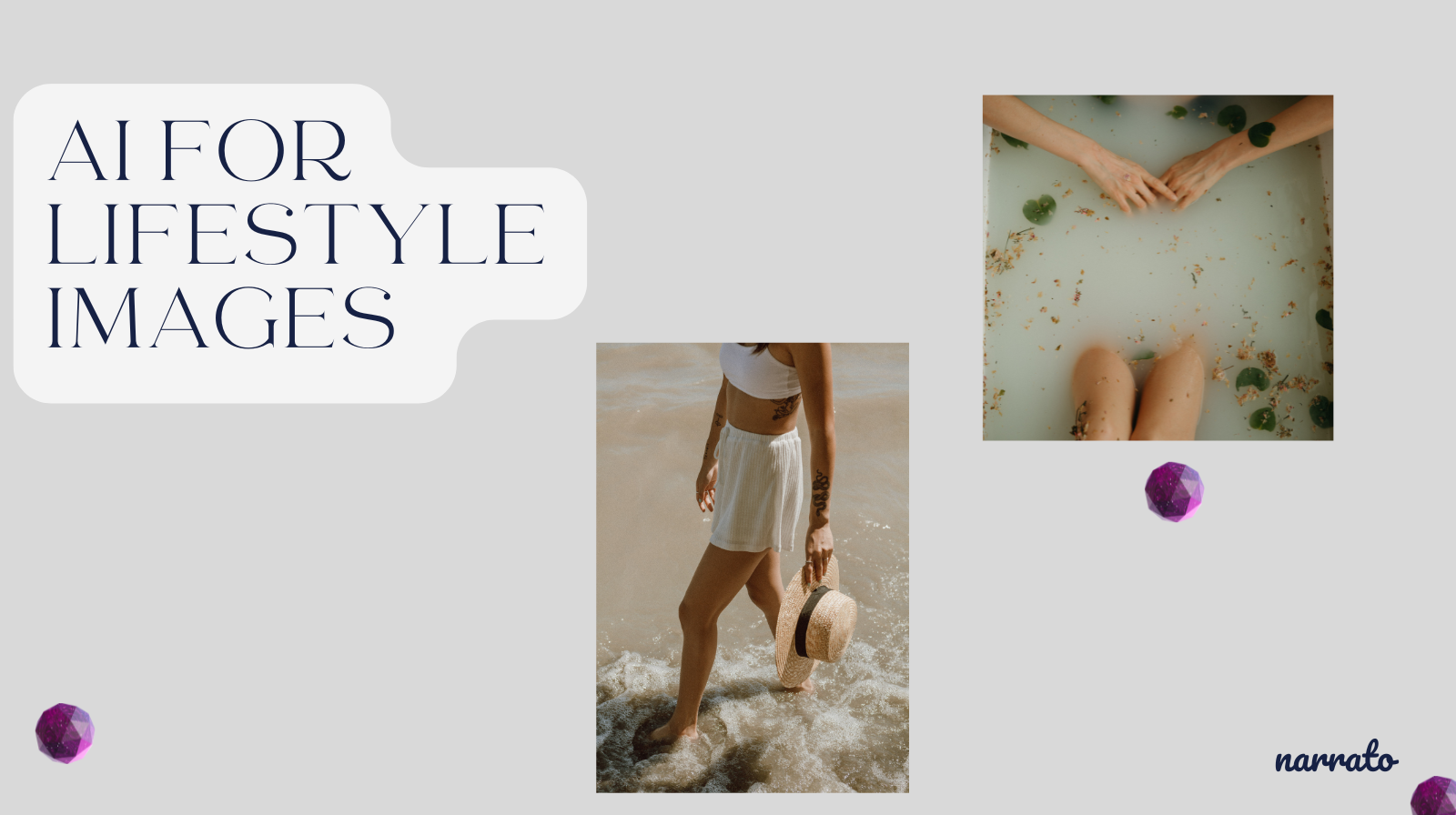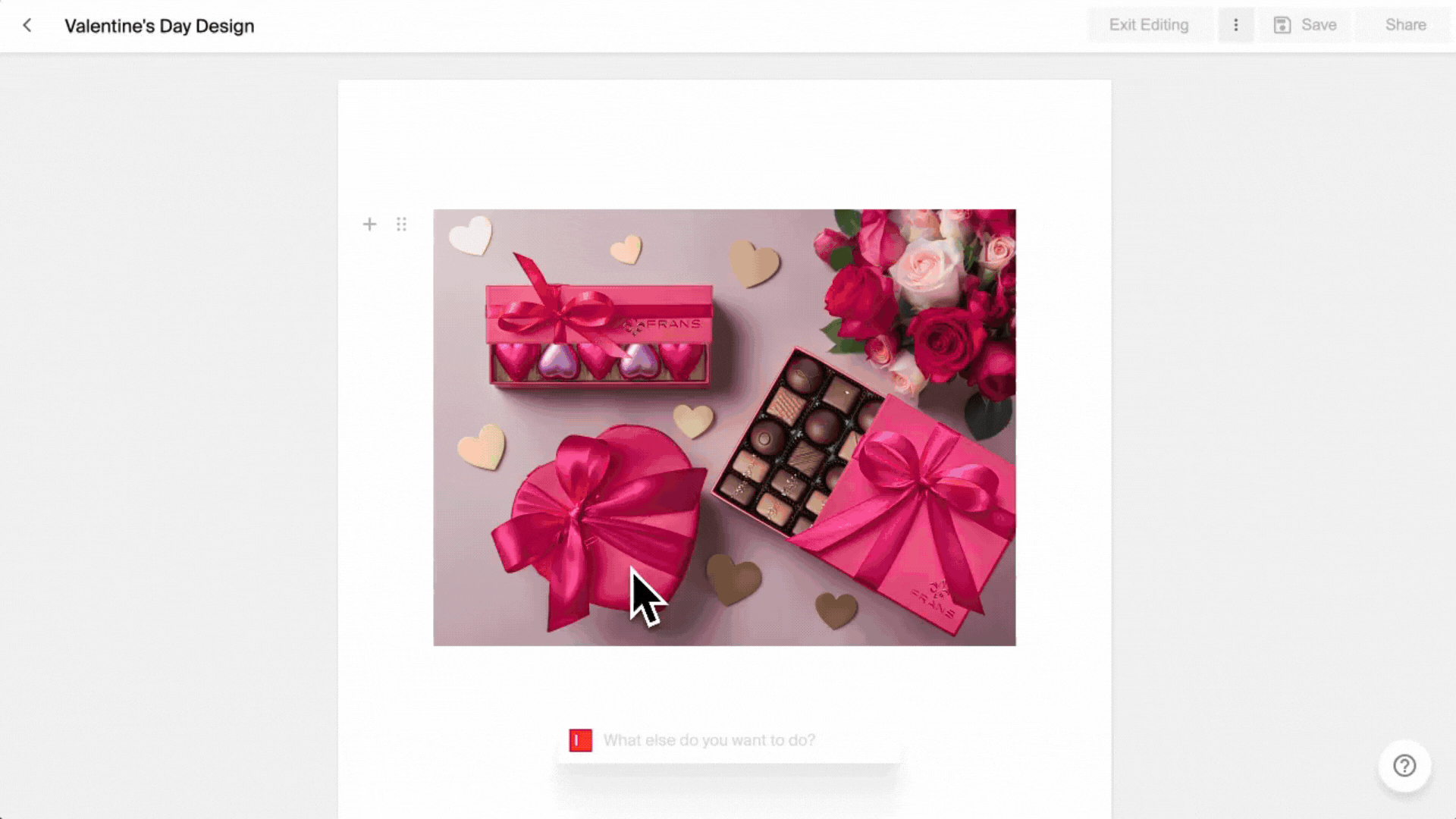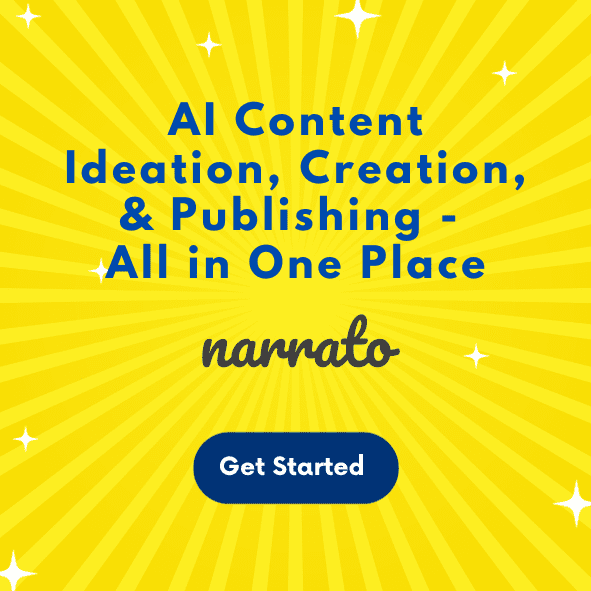Thanks to AI, you can now show products in their natural settings from the comfort of your desk. AI lifestyle photos are rapidly changing the way products are presented online, giving you the power to create context-rich storefronts without massive time and cost investments. Learn how to create lifestyle photos with AI and use an AI product image generator responsibly.
Why use lifestyle photos for your eCommerce site?
How to create lifestyle images with AI?
Adding AI to catalog management

Why do lifestyle photos matter for storefronts and product listings?
Products in-use can surface the needs or aspirations that brought shoppers to your website and intensify their motivation to purchase. For undecided visitors, compelling lifestyle visuals may spark desire and lead to your website being bookmarked — or at minimum, stored in their memory for future consideration.
These are suppositions, of course. Responses to lifestyle images and importantly, conversions attributable to them, depend on the display preferences of your audience. If you’re a lifestyle brand, lifestyle photos are the entire point. But if you aren’t, you may still benefit from placing your products in relatable scenarios because among the potential customers who land on your website, you’ll want to account for those who’ve a strong preference for lifestyle images.
A mix of still-life and lifestyle imagery may lead to a better user experience overall — but only the data will give you the answers. Establish how much lifestyle imagery your audience needs by considering audience preferences, eye-tracking results, conversion rates with and without lifestyle images, and even performance data from email campaigns with and without lifestyle images.

AI-generated imagery for eCommerce
AI image generators are a fast and cost-effective way to cater to different user behaviors and elevate your site’s browsing experience.
Make listings and overall website experience more appealing: AI lifestyle photos seamlessly blend product features with aspirational imagery, making listings more attractive and memorable. For example, virtual models and composites allow you to display apparel on diverse body types, as seen with brands like Levi’s, which used AI-generated fashion models to improve customer experience.
Enhance brand storytelling: By generating diverse and inclusive lifestyle scenarios, AI product photography helps you tell a compelling brand story. You can tailor visuals to reflect your brand’s values and connect with a wider audience.
Save costs: AI-driven product photography automates time-consuming tasks like background removal and image enhancement, allowing marketing teams and small merchants to produce high-quality visuals quickly and affordably
Improved image quality and consistency: Automated editing ensures every product image meets your brand’s standards. Consistent visuals across your storefront build credibility and make your site more appealing.
Scale visual production: An AI product image generator makes it really easy to create a wide variety of lifestyle photos for different products and campaign without stretching your team thin.
SEO and user experience: AI-generated product images improve your site’s SEO by meeting search engine requirements for quality and relevance. Eye-catching lifestyle visuals also create a better user experience, encouraging longer site visits and higher engagement.
Create customizable and diverse visuals: Product photography with AI allows you to tailor images to specific audiences, seasons, or trends. You can easily update backgrounds, models, and settings to keep your storefront fresh and relevant.
Boost customer engagement and trust: AI-generated product images showcase items in realistic settings, helping shoppers imagine ownership and use. This builds trust and increases the likelihood of conversion.
To the big question: How do you create AI lifestyle photos?
Generative AI image tools create images from text descriptions. Simply describe an image in everyday language and AI will generate a detailed image that matches your description. An AI image prompt can be as simple as “Create an image of a family enjoying a Christmas dinner in a living room with a Christmas tree and festive lights.” to “Create an image of our product being held by a beautiful model“, and “Showcase [your product] on a marble dressing table with gold accents against a soft evening glow and plush setting consisting of a velvet chair, crystal perfume bottles, and white roses.”

AI image tools may offer simple editing features like erase, add, crop, lighting, shadows, and filters. For advanced customization, they may integrate with photo editing software.
Image editing on Typeface with Adobe Express integration
Use cases
- Show your product images in different regional or seasonal settings
- Refresh product listings in different styles
- Show the same product in different in-context shots
- Generate image variations rapidly for testing
Tips to integrate AI lifestyle photos in your catalog management
When AI enters your catalog management process, what changes fundamentally is how you generate images. You’ll be using image prompts and establishing production-review-publishing workflows. AI generations may take some getting used to, but after a few tries and iterations, your team should be able to independently create images for their needs. Your creatives can take on advanced customization, now with the ability to ideate, produce, and scale easily and flexibly.
Here’s a quick rundown of the steps to adopting AI for your eCommerce catalog:
- Select the right AI marketing platform: Evaluate AI product photography tools based on ease of use, output quality, customization options, brand alignment, editing features, and integration capabilities.
- Integrate AI-generated images into catalogs: Upload AI-generated lifestyle photos directly to your product listings. Ensure images meet platform requirements for size, format, and quality.
- Catalog management best practices:
- Use auto-tagging features to organize images by product type, style, or season.
- Maintain image consistency by setting guidelines for lighting, backgrounds, and model diversity.
- Regularly update visuals to reflect new trends or inventory changes.
- Smooth workflows: Connect your AI image generation tool with your eCommerce platform to automate updates and streamline the publishing process. This reduces manual effort and ensures your storefront always features the latest visuals.
- Experiment with prompts: Assess the results you get from different AI image prompts. Make the best prompts shareable with creatives to help everyone create efficiently.
- Produce diverse visuals: An AI product image generator rapidly creates multiple lifestyle scenarios for each product. Boost visual storytelling without constraints.
Creating responsibly
While AI-generated lifestyle photos offer significant advantages, it’s important to address common challenges and limitations:
- Quirks and suitability: AI-generated lifestyle photos may not be ideal for every product type. Some items require more nuanced representation, and AI may occasionally produce unrealistic or inconsistent results.
- Brand alignment and consistency: To maintain a unique brand identity, balance automation with creative control. Set clear guidelines for image style, color palette, and model representation to ensure all visuals align with your brand.
- Ethical considerations: You’ve the option to be transparent about the use of AI-generated product images. Customers appreciate honesty, especially when virtual models or composites are used.
- Comparison with traditional methods: While product and lifestyle AI makes visual content production fast, simple, and cost-effective, traditional photography may still be preferred for highly specialized or luxury products. Consider the unique advantages and limitations of each approach when planning your strategy.
Start with a test shop
Using AI for eCommerce visuals is a big decision and isn’t without its risks. If the visuals are low-quality or out of place with your product or brand image, you’re better of limiting AI’s use or not using it at all. And as people have mixed feelings about content created with AI, you can set up a test shop with a few listings to gauge user response to AI images on the site. A test shop is also a great way to get comfortable creating and experimenting with the technology.
Although designed for enterprises, Typeface’s photorealistic capabilities are worth exploring by fast-growing eCommerce businesses. Our AI Content Studio offers content services managed by creatives trained in AI. Typeface’s AI agents produce eCommerce emails, blogs, social posts, and ads, meeting your brand guidelines, voice, image styles, and audience-specific needs.
For text-focused use cases like product descriptions, newsletters, social media posts, and blogs, try Narrato. Ideal for SMBs, Narrato offers templates and AI chat to generate engaging content. One of our strong suits is AI blog generation, where an editable SEO brief and blog performance signals like keyword usage, readability score, and a plagiarism check, help writers hit the mark on SEO and engagement. You can try Narrato on a free trial.






